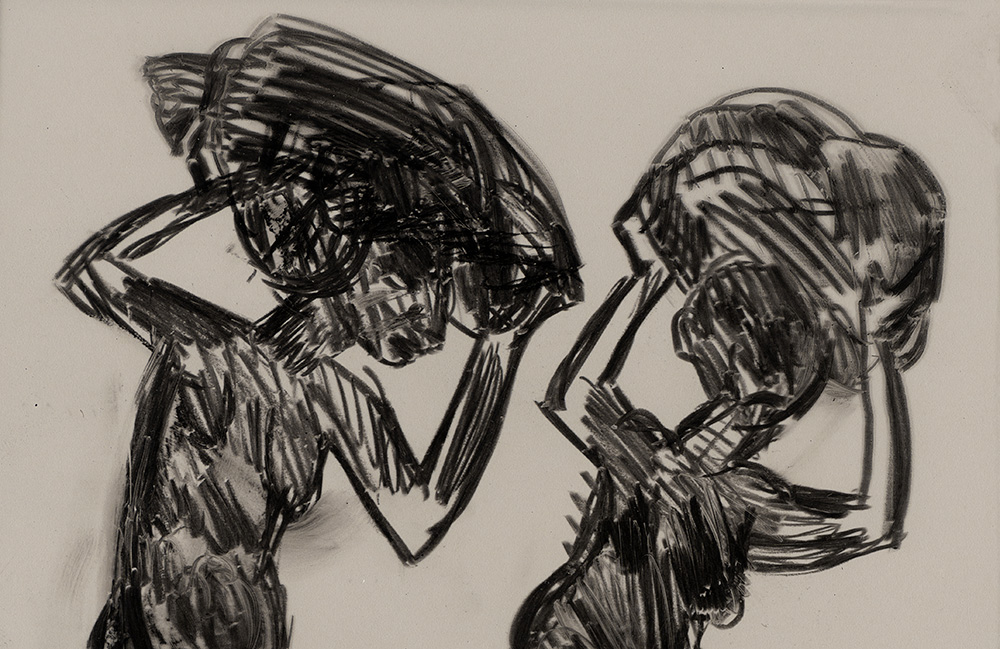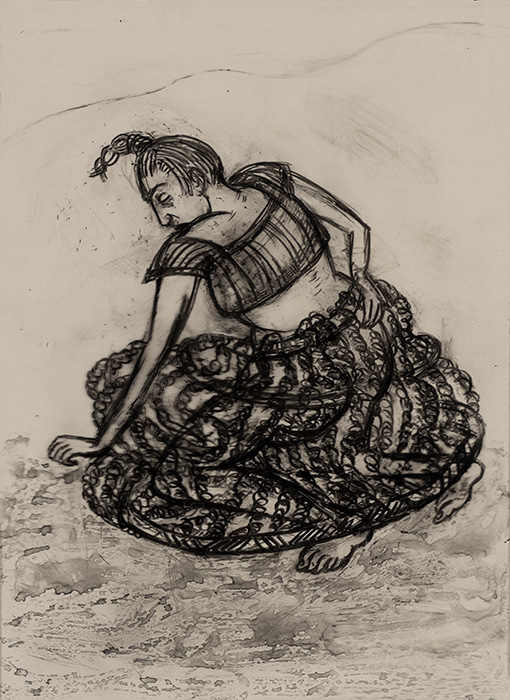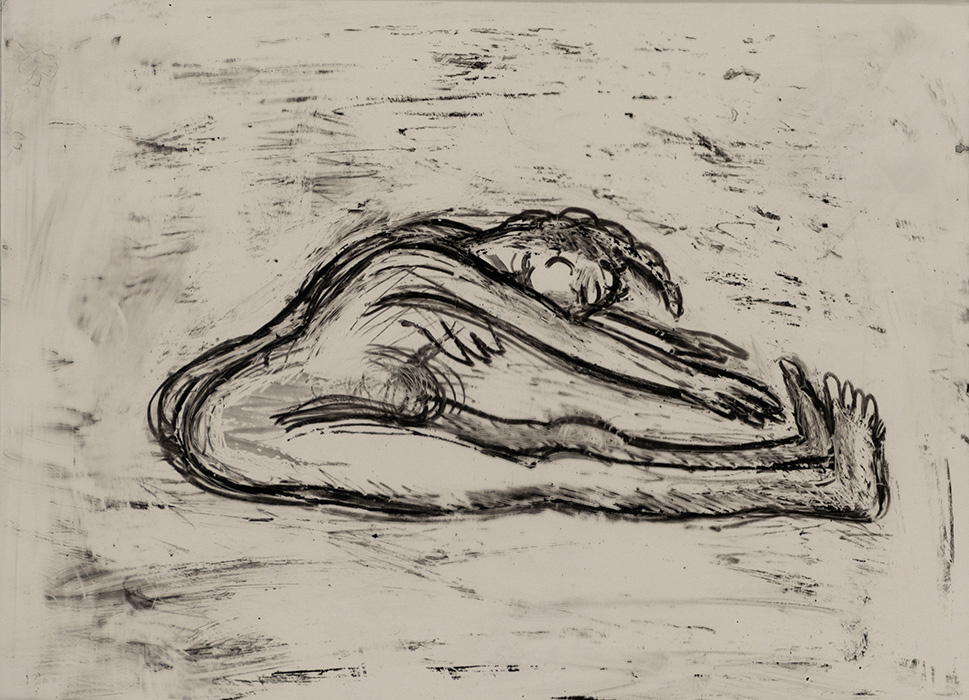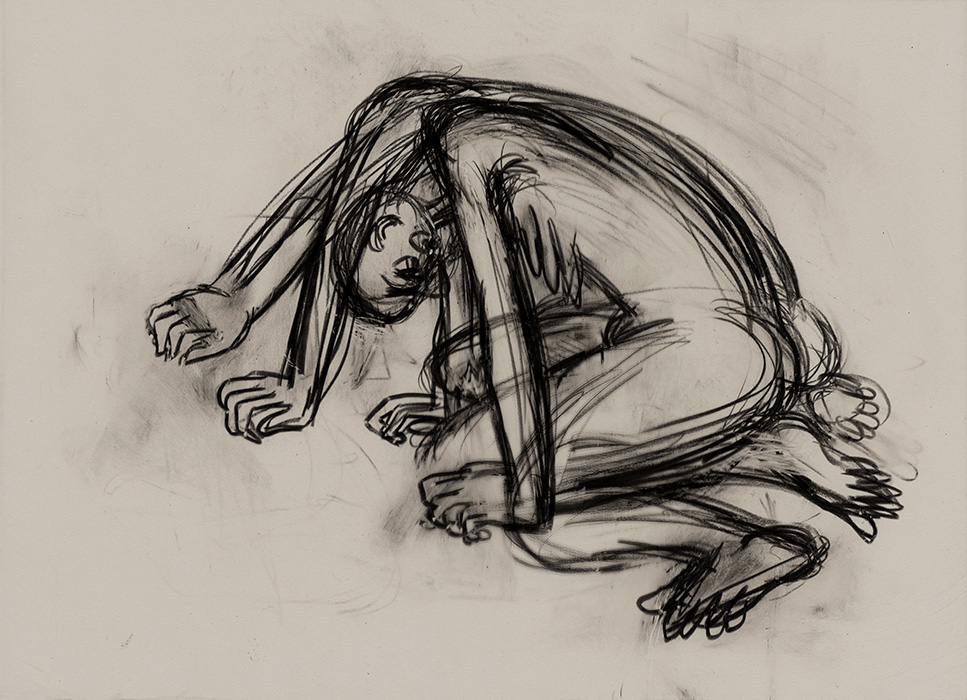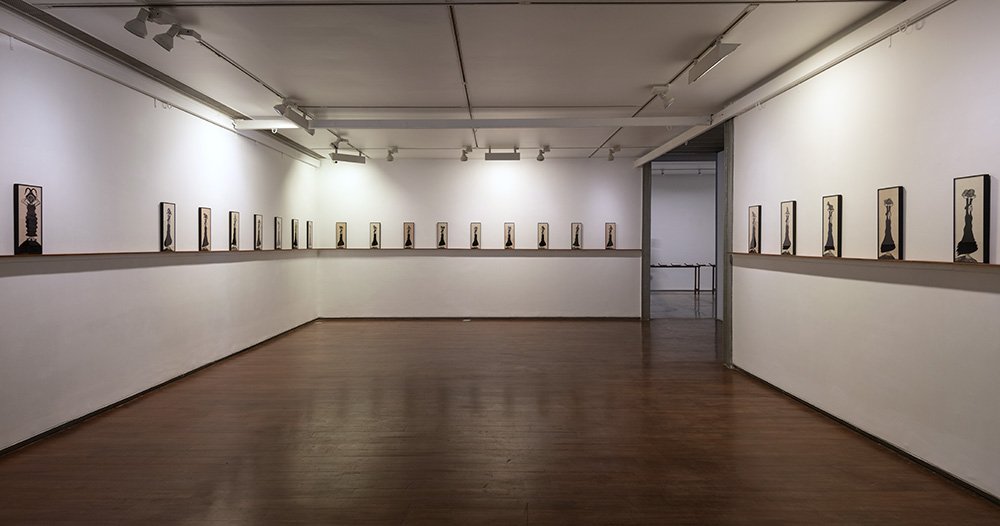QUIETER THAN SILENCE Compilation of short stories 2023
Of Grief and Deliverance:
The Drawings of Shakuntala Kulkarni
Shakuntala Kulkarni - the name conjures up images of strange armour, costumes and headgears built beautifully with cane. Alternately, marching women soldiers in life sized screen projections come to mind. Her work has always explored such unconventional and contemporary art forms to express her concerns. These concerns have been resolutely focused around the life of women in our society. The forms of expression may change but the core concerns have endured.
Shakuntala Kulkarni has been a practicing artist for over 50 years. Since the 70’s she has been an active presence on the Mumbai art scene and also on the national art scene. Her work is now internationally recognized and sought. Apart from her own work, she is passionately involved with the problems of any creative person in present day society. This is apparent in her need to engage with other artists’ work and her willingness to listen to and talk about ideas and issues confronting the art community as a whole.
Shakuntala’s work has evolved through many transformations over the decades. Starting with painting, drawing and graphics, she moved into sculptural installations and sculptures in unconventional materials – working with traditional craftsmen. She has been engaged with theater and film, and expanding on this interest, she has explored the mediums of video and photo-performance. Among her well-known recent works are the multi-channel video performance ‘Juloos’ and the many cane sculptures seen first in her exhibition at this gallery, titled ‘Of bodies, amour and cages’. She has continued to work on this ongoing series of cane sculptures.
The predominant preoccupation of Shakultala Kulkarni's art, through all the formal transformations it has undergone, is the life of women in our society. She has been a resolute, sensitive, and at times angry campaigner against all forms of injustice. Her work, as much as it speaks against the perpetuators of violence against women, speaks to women themselves, seeking to make them conscious of their own strengths. Hers has been a feminist voice speaking as much to oneself as to others. This makes her work introspective and assertive at the same time, and gives her voice an authentic and sincere quality. She has explored the internal, emotional and intellectual life of women as well as the external, familial and social circumstances of this life. Stories of girls, mothers, independent women and old women abound in her work.
Shakuntala has expressed her concern with the life of women through different mediums and practices. Apart from this abiding subject matter, there is another element that connects Shakuntala’s varied practices. This is her drawing practice. Shakuntala Kulkarni makes drawings constantly and compulsively. Entering her studio is like entering a cave with drawings all around you. There are drawings on walls, on boards, and pieces of paper pinned on doors. It seems that all the artist's ideas find their first expression in drawings. The ideas for her cane armour and costumes, her installation works and also her videos, have all taken shape through countless drawings. Shakuntala has exhibited her drawings with work in other media in many of her exhibitions, and viewers are familiar with her drawing practice. It is however after many years that she is here presenting a full exhibition devoted only to drawings, all recent. Drawing has been central to the artist’s multi-faceted practice and this exhibition of drawings allows us to focus on an elementary aspect of the artist’s creative process. Though these are all conceived as independent and finished drawings, they share the spontaneous and raw quality of her preparatory work. Shakuntala uses a range of mediums for her drawings. There are large charcoal drawings on handmade paper here; and there are also small reverse drawings in demography pencil and acrylic on museum acrylic sheet and glass. The variety of thick, thin, sinuous, regular or scraggly lines and the density of charcoal have made the exhibition a visual treat.
The subjects of the drawings in this exhibition are mostly single figures, female, male or androgynous. We see single female figures standing, walking or in different postures. At times they seem to be performing some exercises. We see women walking in a procession. We also see grieving women with a sick or dead child, variations on the pieta theme. The female figures are usually stout, showing signs of having born children. They are drawn at times with multiple pairs of breasts. They seem like fertility figures, seen here in a somewhat degraded state, unlike the highly revered traditional figurines. We also see helpless migrant workers trudging along as if in a trance, their bodies desperately trying to maintain balance. Defeated warriors, their broken armour now a burden rather than a protection, fall to the ground. Human bodies take on peculiar forms, costumes becoming fused with the bodies giving them bizarre, surreal or mythic and futuristic appearances.
In a series of dense charcoal drawings done on large handmade papers, the artist seems to turn inwards seeking the center of gravity in a turbulent and labyrinthine mass of forms. There are moments when the bodies seem about to topple over, only to be saved by their instinctive sense of balance. The bodies are either struggling to get out of, or trying to remain within the shadows cast by their own selves. These powerful works highlight the ambivalent relation between safety and freedom, between the need to remain within one’s safe zone and the need to step out, between sanctuary and prison. The series powerfully articulates the struggle with the self that is the ultimate hurdle to emancipation. They strongly exemplify the introspective and assertive qualities in Shakuntala’s work mentioned above. In their strange inward silence, they suggest that only woman herself can be her own saviour. The decision is ultimately hers alone.
In the seven series of drawings in this exhibition the artist creates emblematic images of pain, violence, defeat and also of resistance and overcoming. Many works exude a dark and defeated mood as suggested by the titles of some of the series,`Fallen warrior’, 'Shattered’, ‘Antaheen’ meaning endless. Other works express energy and determination through a strong animated line. The interesting series 'Swaha' consists of twenty-one small reverse drawings done in acrylic on glass. The individual drawings are arranged as a procession. The similar looking women in each are all of a firm bearing and are seen walking forward holding what appears to be strangely shaped headgears above their heads. ‘Swaha’ is a term chanted at the end of a mantra, or in a ritual yadnya offering. It denotes an auspicious ending. The women in the procession seem to be moving forward to make a final offering of their burden and make themselves free agents. The series is a fitting finale to the exploration of injustice, exploitation and resistance in this exhibition. It gestures towards the possible release from a state of bondage, towards emaciation and fulfilment.
Shakuntala will no doubt continue to explore different mediums to express her evolving concerns. This exhibition of her drawings has given us pause to focus on an essential element of the artist’s creative processes. It also underlines once again, if underlining is needed, the power and versatility of the oldest medium in our hands - drawing.
Sudhir Patwardhan
November 2023
